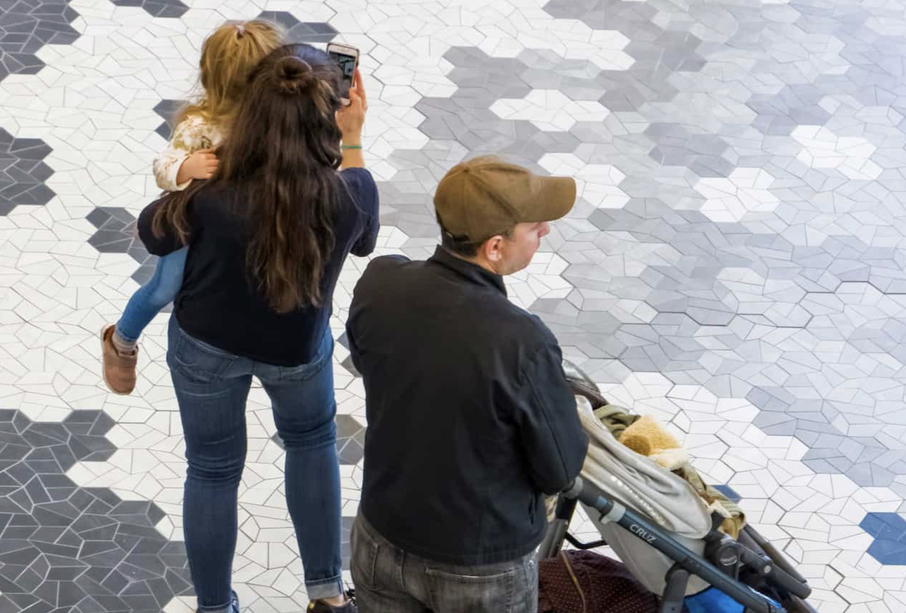I noticed that the new terminal at LaGuardia Airport (in New York) has an intriguing design for the tiles on at least one of their floor areas. It bears a superficial resemblance to aperiodic tilings such as the Penrose tiling, with its occasional "arc-like" patterns. Then again, it seems to be merely based on a deformed hexagonal grid. But then again, the aperiodic hat tiling itself is based on a grid, so a grid pattern alone doesn't rule out the idea that there might be some mathematical significance here! Is it aperiodic? Does it have any mathematical interest? (Perhaps learning who designed/selected the pattern would help; I also don't know anything about that.) FWIW, the Laguardia B FAQ doesn't mention anything about the floors.
Here's a representative sample:








